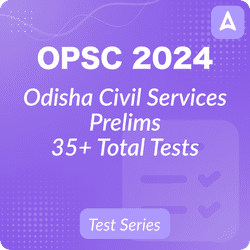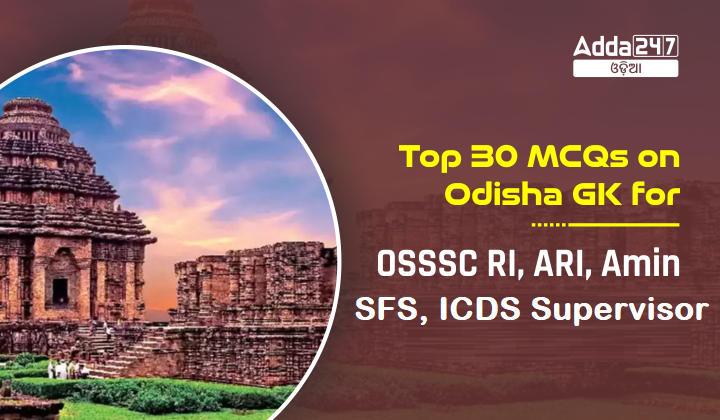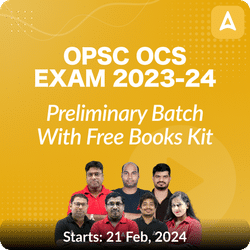General Knowledge is a crucial component of competitive exams, and when it comes to Odisha, a rich tapestry of history, culture, and geography awaits exploration. As you prepare for OSSSC RI, ARI, Amin, SFS, ICDS Supervisor exams, mastering Odisha GK is indispensable. This article presents a curated set of Top 30 Odisha General Knowledge Multiple-Choice Questions (MCQs) to sharpen your knowledge base and boost your exam readiness.
Top 30 Odisha GK MCQS For OSSSC RI,ARI, Amin, SFS, ICDS Supervisor
Here’s a curated list of 30 moderate-level multiple-choice questions (MCQs) based on previous year papers, accompanied by their answers, to help you ace your upcoming examinations:
- Udaygiri, Ratnagiri, and Lalitgiri are together known as what?
[A] Golden Capital
[B] Golden Triangle
[C] Diamond Triangle
[D] Golden Quadrilateral
Answer: [C] Diamond Triangle - Why are Udaygiri, Ratnagiri, and Lalitgiri known as the “Diamond Triangle”?
[A] They are rich in natural diamond reserves.
[B] They were the origin places of Vajrayana Buddhism.
[C] They form a triangle shape on the map.
[D] They were important trading centers for diamonds.
Answer: [B] They were the origin places of Vajrayana Buddhism. - The hilly kingdom between Kalinga and South Koshala was known as:
[A] Mahakantara
[B] Udra Land
[C] Orda Land
[D] Oddiyana
Answer: [C] Orda Land - What is the significance of the word “Vajramani” in relation to Vajrayana Buddhism?
[A] It refers to the golden teachings of Buddhism.
[B] It is a type of Buddhist monastery.
[C] It means “diamond,” which is associated with Vajrayana.
[D] It refers to the founding place of Buddhism.
Answer: [C] It means “diamond,” which is associated with Vajrayana. - Orda was one of the historical names of which present-day Indian state?
[A] Maharashtra
[B] Tamil Nadu
[C] Karnataka
[D] Odisha
Answer: [D] Odisha - What was the name of the foreign historian who divided Kalinga into three divisions?
[A] Pliny
[B] Curtius
[C] Plutarch
[D] Diodorus
Answer: [A] Pliny - Pliny mentioned three parts of Kalinga. Which of the following was one of them?
[A] Dravida
[B] Maceo (Middle)
[C] Vidyadhara
[D] Magadha
Answer: [B] Maceo (Middle) - Who abolished the Chaukidari Tax system in Odisha?
[A] Kapilendradeva
[B] Purusottomadeva
[C] Kaluadeva
[D] Prataprudradeva
Answer: [B] Purusottomadeva - The last ruler of the Gajapati dynasty, Kakhura Deva, was killed by whom?
[A] Narasimhadeva I
[B] Narasimhadeva II
[C] Govinda Vidyadhara
[D] Bhima I
Answer: [C] Govinda Vidyadhara - Govinda Vidyadhara, who killed Kakhura Deva, founded which dynasty?
[A] Chauhan
[B] Rajput
[C] Gajapati
[D] Bhoi
Answer: [D] Bhoi - Under British administration, Odisha was divided into how many administrative units?
[A] 2
[B] 5
[C] 3
[D] 7
Answer: [C] 3 - Which session of the Indian National Congress (INC) decided on the Individual Civil Disobedient Movement?
[A] Ramgarh
[B] Nagpur
[C] Kolkata
[D] Belgaum
Answer: [A] Ramgarh - Who was the president of the Ramgarh session of the Indian National Congress in 1940?
[A] Jawaharlal Nehru
[B] Subhas Chandra Bose
[C] Mahatma Gandhi
[D] Abul Kalam Azad
Answer: [D] Abul Kalam Azad - What title did Govinda Vidyadhara adopt after founding the Bhoi dynasty?
[A] Bhoi Kesari
[B] Suvarna Kesari
[C] Gajapati Kesari
[D] Vidyadhara Kesari
Answer: [B] Suvarna Kesari - What was the historical name of the region now known as Odisha?
[A] Mahakantara
[B] Udra Land
[C] Orda Land
[D] Oddiyana
Answer: [C] Orda Land - In which year did Govinda Vidyadhara found the Bhoi dynasty?
[A] 1441
[B] 1541
[C] 1641
[D] 1741
Answer: [B] 1541 - What is the modern name for the ancient region of Kalinga?
[A] Bengal
[B] Odisha
[C] Bihar
[D] Tamil Nadu
Answer: [B] Odisha - The east coastal plain of Odisha is popularly known as the “Gift of Six Rivers.” Which of the following rivers is not part of it?
[A] Subarnarekha
[B] Baitarani
[C] Mahananda
[D] Rushikulya
Answer: [C] Mahananda - The “Gift of Six Rivers” includes six rivers on the east coastal plain of Odisha. Which of the following rivers is included in the list?
[A] Krishna
[B] Godavari
[C] Budhabalanga
[D] Mahananda
Answer: [C] Budhabalanga - Where is the Nalabana Bird Sanctuary located?
[A] West Bengal
[B] Tamil Nadu
[C] Odisha
[D] Kerala
Answer: [C] Odisha - What is the size of the Nalabana Bird Sanctuary?
[A] 12 sq km
[B] 16 sq km
[C] 20 sq km
[D] 10 sq km
Answer: [B] 16 sq km - Which of the following migratory bird species is NOT commonly found at Chilika Lake?
[A] Bar-headed geese
[B] Greater flamingos
[C] African grey parrots
[D] Black-tailed godwits
Answer: [C] African grey parrots - What does PVTGs stand for in the context of Odisha’s tribal communities?
[A] People of Vulnerable Tribal Groups
[B] Particularly Valuable Tribal Groups
[C] Particularly Vulnerable Tribal Groups
[D] People of Valued Tribal Generations
Answer: [C] Particularly Vulnerable Tribal Groups - Where are the Particularly Vulnerable Tribal Groups (PVTGs) mainly found?
[A] In urban areas across India
[B] Concentrated in certain pockets of Odisha
[C] Across the entire country in small numbers
[D] Only in remote regions of the Himalayas
Answer: [B] Concentrated in certain pockets of Odisha - Up to which class level is multilingual education (MLE) currently mainly provided in Odisha for tribal students?
[A] Class VIII
[B] Class X
[C] Class V
[D] Class III
Answer: [D] Class III - Which objective does multilingual education (MLE) aim to achieve for tribal children?
[A] Restricting the use of mother tongue in early grades
[B] Improving reading, writing, and learning skills using their mother tongue
[C] Excluding local languages from the education system
[D] Discouraging the use of state and national language
Answer: [B] Improving reading, writing, and learning skills using their mother tongue - How many communities are enlisted as Scheduled Tribes in Odisha under the provisions of Article-242 of the Indian Constitution?
[A] 50
[B] 62
[C] 70
[D] 74
Answer: [B] 62 - How many research centers of excellence (CoEs) across public universities in Odisha have been awarded sustainability grants?
[A] 5
[B] 8
[C] 11
[D] 15
Answer: [C] 11 - Which university’s research on ‘natural products and therapeutics’ received the highest grant of Rs 35 lakh?
[A] Berhampur University
[B] Utkal University
[C] Ravenshaw University
[D] Sambalpur University
Answer: [D] Sambalpur University - Under which programme were the sustainability grants awarded to research centers in Odisha?
[A] Odisha Research Enhancement Programme
[B] Odisha Higher Education Programme for Excellence and Equity (OHEPEE)
[C] Odisha Innovation and Research Programme
[D] Mukhyamantri Higher Education Development Programme
Answer: [B] Odisha Higher Education Programme for Excellence and Equity (OHEPEE)




